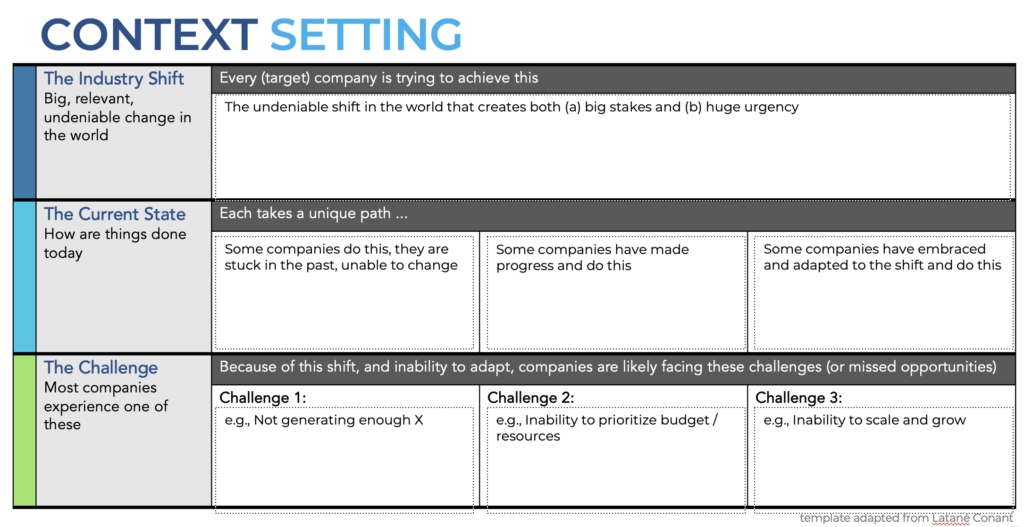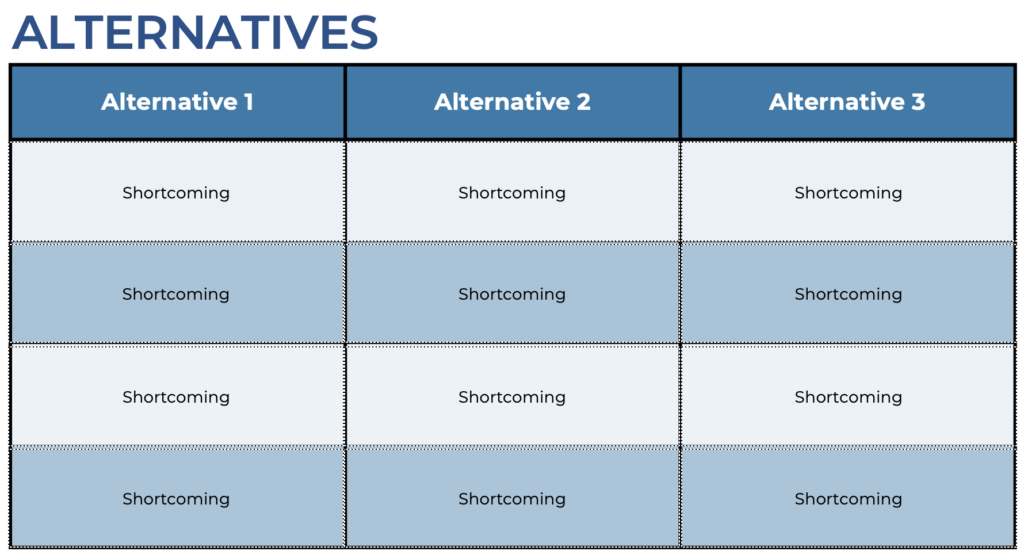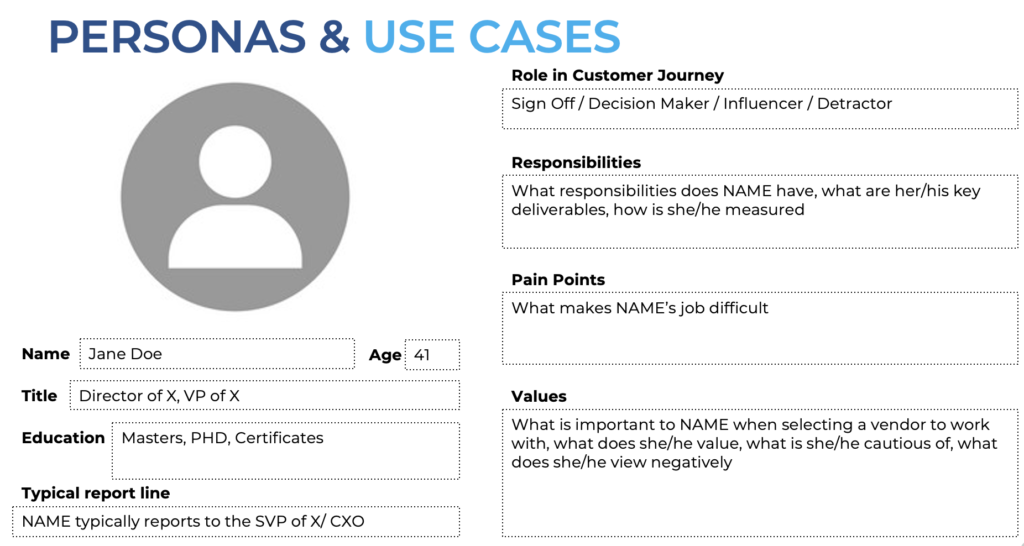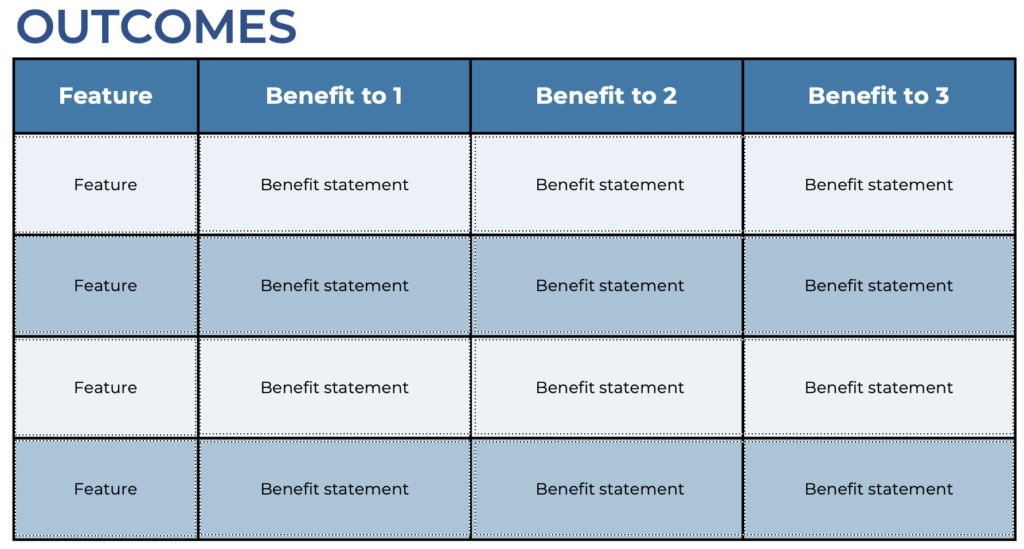Messaging House Rules: Are You On Message? (Part 2)
Messaging House Rules: Are You On Message? (Part 2)
In the previous blog, I talked about the need for your company to have a Messaging House. A Messaging House enables you to describe—succinctly and clearly—what your company does, why that is more valuable than the next best alternative, and then give proof or evidence to back up your claims. Together, this setup will form a solid base for all your messaging efforts.
The architecture of a Messaging House
As a way to see what “done” might look like: Let’s take an imaginary services company that implements Account Based Management solutions.
Their final Messaging House might look something like this:
Umbrella Message:
The world of B2B marketing has changed. In order to be successful, B2B technology marketers have realized that Account Based Marketing (ABM) is the way forward. Those who don’t embrace ABM may well find themselves in the spam box next to all the other unsolicited emails out there.
Even so, many companies struggle to implement ABM marketing tools and processes––why?
Value Claims:
Because they lack the right skills, experience, and people.
That is the problem we set out to fix, and it’s all we do. It’s our passion. Across people, processes, and technology, we implement ABM faster, cheaper, and with less risk than our customers can achieve themselves.
Evidence:
- We had Lorem, Inc, up and running in six weeks.
- We got Ipsum, Inc, at a cost of fifty percent of what they estimated it would take to do it themselves.
- After three aborted attempts at trying to implement ABM internally, we did it for Dolor, Inc. in under 2 months
And we can do it for you.
That’s an example of what a completed Messaging House would look like. It seems simple, and it should be. But, as a foundation for all your messaging, your House needs to be well thought out––every word matters.
Getting started
So we know a Messaging House is important––critical, even. But how do you get there? And where do you start?
Download your Messaging House templates
In this post, I will walk you through a set of seven key templates that will give you the information you need to start creating your own Messaging House. Notionally, you can go through them one by one, but I have found that you will often revisit earlier work as you discover more along the way.
Cast the net wide in your research. Talk to execs, marketing, sales, support, services––anyone who touches the customer or market in any way will have an opinion on different elements of the following questions. In the end though, authorship of the Messaging House should belong to the organization, not the C-suite–so don’t put a VP or C-level person on a call with, for example, a sales exec. This can often stifle the very candor we are looking for, as people in general will defer to management.
The other important thing to keep in mind is that the information you collect from these exercises is just a starting point. Unfortunately, there is no magic formula to creating your Messaging House––it is a process; one that requires frequent iterations, creativity, and a commitment to reaching your customer in the best, most effective way possible. So that whiteboard you’re staring at will still be a whiteboard, but after doing these exercises, it certainly won’t be empty anymore.
Messaging House exercises
Download your Messaging House templates
1. Contextual Industry and Market Trends: With this template, we are setting a backdrop for your Messaging House. This typically feeds into the umbrella statement by answering the following questions: Why is it urgent that our customers address the problem you are proposing to solve? How is the market going about it today–from laggards to leaders–and what happens to your customer if they don’t solve the problem? (This is from the great book “No Spam, No Forms, No Cold Calls” by Latané Conant––a recommended read.)
2. Positioning: This template refers to your product (or, more generally, offering) positioning. It’s been around for years, but Geoffrey Moore’s “Crossing the Chasm” positioning template remains relevant and powerful. Like writing a haiku, nailing down your positioning forces you to be succinct at describing what you do, who your product is for, why you’re better than the alternatives, and the outcomes you provide.
3. Target Markets: Who is your target market? In addition to simple firmographics, we also want to list their so-called “soft” characteristics. Perhaps you want to see customers that are already using a particular technology, handle highly regulated information, or have recently made a large acquisition. Whatever it is, we want to create that ideal customer profile by listing and stack-ranking all the soft characteristics that make up your ideal customer.
4. SCIPAB: This is a great tool from Mandel Communications. It’s similar to what we did in #1, but new insights can be revealed just by changing the way you ask the question. Here we are trying to describe, in detail, what the customer’s current state is, why that needs to be changed (or how they can do better), what actions you want them to take––and the benefit to doing so.
5. Alternatives: Next, we want to spend some time exploring the alternatives to your offering. Whatever you are proposing to help your target customer do better, how are they doing it today? If this status quo is not acceptable, then what are the other alternatives they have for solving the problem? And please––make sure to spend some time on the status quo. For many of the customers I work with, the most common reason for losing a deal is that the customer has decided to stay with the status quo.
In the ABM example I gave above, we compared our offerings to the customer putting together a DIY solution for themselves. This analysis then would help us crystallize the shortcomings of DIY and establish how to present our offering as a preferable alternative to either leaving the issue as is (status quo) or attempting to solve it in-house.
6. Personas, Use Cases, & Case Studies: Once you have created your generic messaging house, you will then want to tweak it for certain personas. Say I was marketing a network security software offering––the value claims for a CISO in the healthcare industry might be framed in terms of HIPAA compliance, whereas in retail it might be reputation protection and GDPR compliance. The product, in both cases, is the same, but how you frame the value prop changes––and that is informed by your persona work.
Ideally, we don’t want to just limit this exercise to the product users. You also need to think about the personas that will make the purchase decision, who influences that decision, and also, the likely detractors. (There will generally be folks that, for whatever reason, may object to the purchase, so we have to factor in those personas as well.)
Top tip: use a stock image as a photo, and give this ideal customer a name. The more we can personify these sometimes sterile personas, the better. (Note: we won’t be covering it here, but persona development is also key for customer journey development and content strategy mapping. This is a high-level messaging document to get you started. Aventi Group can provide a more in-depth persona for your target market. To learn more please contact us.)
7. Outcomes: Again, this is for tuning the Messaging House to specific personas (or indeed industries). We want to see if we can go beyond the vanilla features/benefits approach you might have used to create your messaging before. Instead, we want to articulate a set of benefits for each persona/industry. Why is the end user going to find this beneficial? What are the benefits for the decision maker, the stakeholders––and perhaps even the detractors I mentioned in point number 6?
All of this information will go into creating your final Messaging House. From the above, you will draw the evidence or proof that forms the foundation of your House, the value-added propositions that make the walls, and finally, most importantly, you will extrapolate that all-important umbrella message to make the roof of your House.
I’m sorry to say there is no algorithm, no formula, no double click that will auto-magically generate this structure from the seven steps above. This is where true synthesis and creativity is needed. But this time you have a ton of work, a ton of thinking, a ton of input (and alignment) that can help inform the elements of your House. Again, you are not just staring at that stark, empty whiteboard.
Three final points
Three final pieces of advice as you get started (there it is–that number three again!) These speak less to what you do, as described above, than to how you do it:
- Favor criticism over synthesis: When I run these engagements, after I’ve had one-on-one calls with many different people, I always present the stakeholders with my attempt at whatever template we are working on. I state at the outset that what they are about to see is almost certainly wrong. But here’s the thing––it’s much easier for people to criticize rather than synthesize.
Set aside pride, hubris, and certainty. Instead, ask! Tell me where this is wrong; tell me where changes need to be made; tell me what I am missing. Asking is so much faster and more effective than having a group of people staring at a blank template. It’s iterative, like a decaying orbit around a black hole––eventually, inevitably, we will all be in the same place; we will all end up at the singularity. (A somewhat bleak analogy, but you get the gist.) In today’s virtual work world, there are many great tools (such as Miro, for one) that can facilitate this process.
- We are in the sausage factory now: Some people just want a quick answer and will get frustrated at the creative journey. As was once said, “If you don’t want to know how sausages are made, stay out of the sausage factory.” There will be some people that don’t want to engage in the process. Note that fact, then ask if they want to be part of this process and explain what it will mean. If they don’t, that’s fine––you can bring them in when you are almost done.
- Beware of the cognitive bias trap: It’s a thing; we all do it: We unknowingly favor things we want to be true, that align with our beliefs, and discard things we don’t agree with or don’t want to be true. Watch out for this. This is why (and no pitch here) companies are often best served by having someone independent and objective, without baggage or bias, to run the Messaging House process.
So now you have a white board full of information, you know the best ways to engage with different stakeholders, and you are ready to craft and hone your Messaging House in order to achieve optimal results with your messaging. The rest is up to you and your team, but with these tools at hand, you should be well on your way.
Good luck, and I hope you found this information useful. Here is a link to the Messaging House templates used above.













